Maybe it was their first date. Maybe it was the day when he would kneel in front of her and propose. In a romantic stroll down the river bank, with little fingers furtively intertwined, they would be daydreaming about the future. About the house they would build, about the cattle they would raise, about their kids that would playfully run down the street. But there was a leak in this love story! The place did seem perfect: UNESCO listed the walled city of Harar as a World Heritage Site. But the blue river the romantic couple was walking by while coining their fabulous future, was not blue because of the water. Used plastic bottles were filling the canal around the walls of the ancient Ethiopian town, as a memorial to plastic pollution. Was this World Heritage Site celebrating the world’s best heritage of all – the Plastic?
Plastic pollution is not an apocalyptic nightmare that should make us afraid of the future. It silently sneaked into our dreams and messed up with our awareness. It’s here, it’s now!
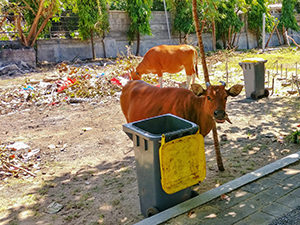
While traveling around the world in the past couple of years, I’ve seen many dramatic examples of how we, the humans, have changed the nature of things. Cows eating garbage in Cambodia, boys swimming in the rivers of trash in the Philippines, sea turtles dying entangled in plastic bags in Indonesia… These are all parts of the same story!
If we speak about waste, humans are incredibly productive species. A big part of it is a plastic waste. It is omnipresent in our daily lives, and even more invisible in the travel industry. We take a plastic bag in every shop, we steal small shampoo bottles in hotels, we drink cocktails with not one, but two plastic straws. We are writing our death sentence! Is plastic free world even possible?
Empower your fight for better environment with these inspirational Earth Day quotes and slogans!
No plastic island
When I recently went to visit Mooban Talay Resort on Koh Samet in Thailand, I was excited about the prospect of witnessing an island saying ‘no’ to plastic waste. The archipelago of Samet was a national park since 1981, but in 2018, the island exorcised plastic bags and styrofoam food boxes. Thailand implemented the same restriction in all its 150-ish national parks.
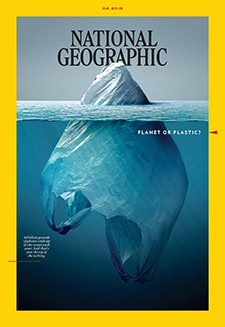
When they introduced the measurement that would hopefully make the island’s environment cleaner, the authorities came out with some shocking plastic pollution statistics. Koh Samet had about 1.500 visitors a day, and each of them brought eight plastic bags on average! Every single day, tourists left 12.000 plastic bags on this small island!
The idea of forbidding the bringing of the single-use plastic bags and threatening with fines of 1.500 Bahts (43 Euros) seemed romantic on paper. Maybe as romantic as the Sunday walk of that Ethiopian couple in Harar. It was delusional!
The departure point for Koh Samet is Ban Phe, the coastal town famous for producing the fish sauce. Nuanthip Pier is the place where tourists board the boats that will take them on a journey of ecological pride. They could have chosen to stay at any other tropical island in Thailand. But they picked Koh Samet, the one that told them to say ‘goodbye’ to plastic! My nose was telling me there was something fishy about all of that. And I knew it was not the fish sauce for which Ban Phe was famous.
Plastic pollution is just one contributor to global warming. Learn how you can simply reduce your carbon footprint and contribute to a greener world!
The plastic waste of plastic waste
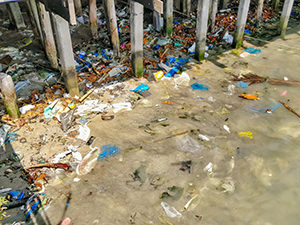
If you decide to visit the no-plastic island of Koh Samet, before boarding on your romantic ecological journey, please take a look under the pier! Tell me: is this what eco-tourism is all about? Does saying ‘goodbye’ to plastic mean throwing it at one place, so we don’t bring it to the other site? How is this different from sweeping the dust under the carpet?
The beach under the pier leading to the plastic-free island was full of thrown plastic bags and other trash that ecological tourists could not bring further. Plastic in the sea was floating like some seaweed. It almost looked… Well, natural. The policy that aimed to eradicate the single-use plastic was clearly STIMULATING that the plastic tourists have brought would remain – single-use!
Frankly, I’m not a no-plastic tourist. I have my “single-use plastic bags” in every suitcase I travel with. Typically, I have a plastic bag that keeps my dirty shoes away from my clean clothes. Sometimes, one of these plastic bags separates wet swimming trunks from the dry underwear. My shower gel is in another plastic bag, since that episode when it spilled all over my toiletries. I use these bags for years, and would never call them single-use!
There is no ecological sense in making tourists throw away their perfectly usable plastic bags
While the island’s policy sounded intimidating, I decided to risk the fines and smuggle my plastic bags onto the island. I didn’t see any ecological sense in throwing away entirely usable plastic bags, just because here they allowed the throwing, and on the island, it would be a felony. Most of the tourists follow the protocol of throwing away their plastics. The result is not the beauty of Koh Samet or less plastic in the world. The result is the ugliness of Ban Phe and MORE plastic in the world!
No plastic policy as a marketing stunt
We embarked and left Ban Phe behind. One could easily forget this stop-over town. With minimal effort, one could easily not see the fishing boats laden with the catch of the day. One could easily not imagine the fishermen working with their nets and separating trash from fish that we would dine in the evening.
In the middle of the channel between Koh Samet and the continent, I noticed a floating plastic cup. The days are hot here, and somebody had to refresh with a smoothie. Bringing plastic to the island was forbidden. Throwing plastic in the ocean was the way not to pay the fine. Nobody imagined the ocean waves breaking plastic into pieces of microplastics, fish eating the pieces, us eating fish. Plastic doesn’t disappear.
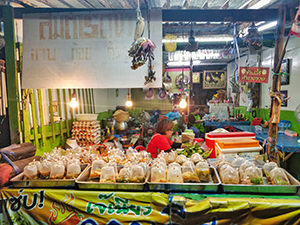
On every corner of Koh Samet, every 20 meters, I could see that the plastic-free campaign didn’t work. Thai people were obsessed with plastic and didn’t know other methods of packing or transporting goods. Everybody walked around with their plastic bags filled with groceries, as in any other part of Thailand. This made all that throwing of plastic bags in Ban Phe even more tragic!
I quickly learned that “no plastic” policy on Koh Samet was a marketing stunt. The island was drowning in plastic waste, like all other major destinations in Thailand! If there were a dedicated decoration for lies, they would’ve probably wrapped this lie in plastic too.
Greenwashing is present even in the highest political actions to tackle climate change. Check out how the delegates of Dubai's climate summit traveled there by - private jets.
Plastic pollution with make-up
One look at a local market stall, and everything was clear! Single-use plastic gloves. Plastic bags for the meat skewers. Hard plastic for the chicken. Plastic bags for pineapples which were already packed in plastic. Apples that arrived in plastic bags, before they unpacked them for sale, only so they could pack them again for customers. Plastic bags attached to an improvised fan so they would keep flies away. Even the umbrellas were being sold wrapped in plastic! In the local restaurant, I got a plastic straw in my fizzy drink bottle. No question asked.
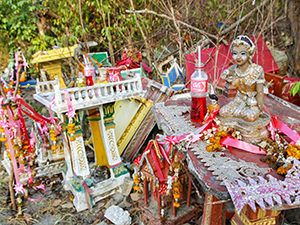
Sides of the roads on Koh Samet were places where passers-by threw away their trash. At one part of the road, I found some spirit houses where Thai people would leave the votive offerings. At these little shrines, they would often offer the bottles of some drink. With a straw. Even the spirits couldn’t drink Coke without a straw!
I sat down for a meal, just next to the checkpoint, where tourists needed to pay their national park entrance fee. There were four security officers in the shift. During one hour, I didn’t see them stopping anyone with a plastic bag. And many tourists had them! The only thing officers were doing was collecting the entrance fee.
At one moment, one of the officers took a break and walked to a stall nearby to buy some snack. The seller removed the plastic cover from the food and served it to this security officer in a plastic bag. He walked away, carrying this very forbidden thing. If the national park employee was breaking the law, emphasized by numerous warning displays in the center of the town, why would anyone else get the message?
Learn the brief history of plastic and plastic pollution in this short video made by National Geographic in 2018!
7/11 goes bananas
If you have ever entered the 7/11 store in Thailand, you know how quickly you got bombed with plastic. In one shop in Bangkok, I bought a big bottle of water. In a matter of seconds, while I was trying to find money, this big bottle was already in the plastic bag. There were also two plastic straws inside. Because who doesn’t drink water without a straw? I assume I got two because I needed to connect them in a big straw, as obviously I did buy the big bottle of water, and one straw would not reach the bottom!
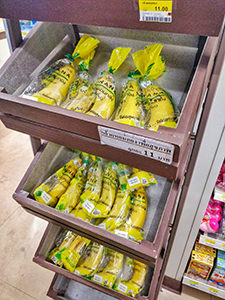
Koh Samet’s 7/11 came into fame quickly as the place where one couldn’t get a plastic bag when shopping. It was a flashy promo I needed to confirm by my own eyes.
The seller had a pale face when I asked for a plastic bag. The gaze almost had some condemnation in it, as if it was saying: “How dare you?”
However, next to the cash register, plastic straws were waiting for all those thirsty tourists. For the hungry ones, there was a whole stand with bananas. They were selling them by piece. Every single banana was wrapped in its own plastic bag! Bananas! Fruit that grows in its own “bag”!
10 plastic pollution facts and figures you absolutely need to know 1. The name plastic describes the plasticity of the material, which means the ability to deform without breaking apart. 2. The plastic bag was first invented as a sandwich bag in 1957. By 1970s, it became the prime method for transporting groceries! 3. The average use of a plastic bag is 12 minutes! 4. Since their invention, none of the plastic bags has ever degraded naturally! They estimate that it can take up to 1000 years for a plastic bag to degrade in a landfill! 5. Only 14 percent of plastic packaging is collected for recycling! The rest directly contributes to the plastic pollution! 6. UN Environment report in 2018 found that 79 percent of all plastics ever made have ended up in oceans and landfills. 7. Plastic is killing our oceans! Every year, 1 million sea birds and 100.000 marine animals die because of plastics! 8. One out of every three leatherback sea turtles has been found with plastic in their stomach! 9. Every minute, one truckload of plastic garbage enters the seas! That’s 8 million tons of plastic per year! The World Economic Forum report estimated that by 2050, there would be more plastics in the ocean than fish! 10. Plastic is killing us, too! According to the UK research published in Environmental Pollution, each of us eats around 100 bits of microplastic in every meal! That’s 70.000 pieces of microplastic in a year!
Lies of the travel industry
Koh Samet’s idea of becoming a plastic-free island obviously didn’t work. It was either a failed ambition or a cheeky deception. It quickly demotivated me of staying there longer. I shortened my stay to three days that I initially reserved the room for, even if I planned to spend at least a week on this island with impressive beaches (and inviting eco policy). The no-plastic lie was the main factor motivating the earlier departure.
Years ago, the chain hotels had the marketing campaign ‘Save a towel, plant a tree’. Where are those forests now?Christian de Boer, MD at Jaya House RiverPark
Using lies for promotion is nothing new in the travel industry. How many times have you read in the hotel bathroom that they will wash your towel only if you leave it on the floor? Even if you have hanged them on the rails, the next time housekeeping would visit your room, you would find a whole new set of towels waiting for you.
“Years ago, the chain hotels had the marketing campaign ‘Save a towel, plant a tree’. Where are those forests now?”, asked Christian de Boer, a managing director of Jaya House RiverPark, Cambodia’s most ambitious eco-conscious 5-star hotel. “In 2019, the hotel industry is finally about real action and not merely words or marketing campaigns. It’s about the actions which you can verify and check as a potential guest.”
Jaya’s no-plastic dreams coming true
The first time I visited Jaya House RiverPark in Siem Reap, it was 2017. The hotel just opened, and while its facilities and services were world-class excellent, the investors had to have some bravery to accept the idea of a no-plastic hotel as a sustainable business model.
I had the pleasure to check the hotel this year too, and it was running better than ever. It was going so well that the opening of Jaya House no. 2 is behind the corner!
Unlike Koh Samet, Jaya House promised and delivered no plastic policy to its maximum. They served drinks with bamboo straws, they offered shower gel and shampoo in refillable ceramic bottles, they replaced free plastic water bottles with refillable glass alternative.
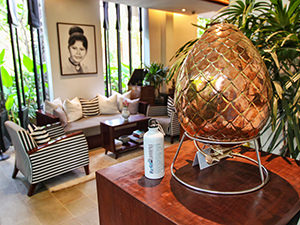
Each guest would receive a complimentary aluminum bottle refillable at numerous stations in town. This was a part of Refill Not Landfill campaign. So far, ten countries have joined this movement to reduce the bottle part of the plastic waste, Thailand included. Nota bene, none of the partners were based in Koh Samet yet.
The numbers behind this story were implacable. Every month, tourists in Cambodia use more than 10 million plastic bottles. Most of these end up in landfills as the country doesn’t have a recycling system. A single aluminum bottle can replace more than 4.000 plastic ones! Refill Not Landfill initiative introduced a revolution in how tourists consume water in Cambodia!
One part of the plastic trash ends up in Siem Reap River. In the town that undoubtedly didn’t provide an adequate public service for waste management, Jaya House RiverPark regularly cleaned the river and its banks. Additionally, the hotel brought trees to the river bank. In two years, they have planted almost 1.000 trees with a minimum of 3-meter height!
Do you want to support this business? Stay at Jaya House RiverPark at the best price available!
No concession on luxury
“That’s all common sense!”, Christian de Boer told me. “We cannot continue to contribute to destroying this planet. All of us have to make a bigger effort! We are never going to be perfect, but let’s try at least!”
With various programs that contributed to Jaya’s natural and social environment, one can think that these investments reduced the budget for enhancing the guest’s experience. But on the contrary, Jaya House exceeded the expectation one had from a luxury resort.
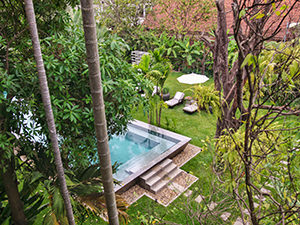
Free mini bar and fruit, free mobile phone to talk to the reception at any time and any place, free tuk-tuk rides, free bicycle use, free laundry, free massages… With pleasant rooms, two state-of-the-art swimming pools, turn-down service, and amazing breakfasts, the guest’s experience was in the middle of the attention!
Did this show that the care for the environment can go beyond just romantic ideas and be – profitable?
The friends of the environment are ready to pay more
The Association of British Travel Agents (ABTA) published a report on Travel Trends 2019, which suggests that responsible tourism has gone mainstream. The report found that 45 percent of people said that the travel provider’s sustainability credentials were an important factor when booking a holiday. This number almost doubled over the last four years!
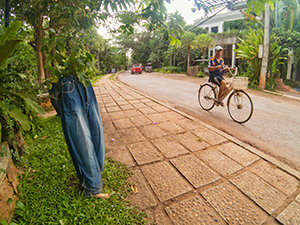
“Future guests want it!”, Christian exclaimed. “Future guests demand it and are happy to pay a little bit more. Well, a realistic amount more. That’s a fact!”
Booking.com’s study in 2018 revealed that “two thirds (67 %) of travelers would be willing to spend at least 5 % more on their travel to ensure it was as low impact on the environment as possible”.
The opening of the second Jaya House in Siem Reap proved that the investment beyond the hotel, into the environment, did pay off!
However, use eco-branding just like a marketing stunt, and you will be losing customers, not gaining them! Again, I’m looking at you, Koh Samet!
8 Southeast Asian stores downsizing the plastic pollution Southeast Asia is not only pioneering with places where one can refill a water bottle. There is another answer to the plastic pollution! Stores selling products without packaging are popping up everywhere revolutionizing the shopping experience! Here are eight places where a shopper can lower the negative impact of plastic on the environment! Zero Waste Bali, Indonesia – at several locations in Bali, the first Indonesian bulk store offers more than 200 package-free items (food and not food)! The Hive, Kuala Lumpur, Malaysia – a zero-waste store where one can buy anything from reusable sanitary pads to washable baby wipes, from granola and pasta to coffee and spices – in the amount one needs! BYOB (Bring Your Own Bottle), different parts of Malaysia – a concept detergent store allowing you to refill your bottle with a wide range of products, from car care, personal care, clothing care and household cleaners to products such as insect repellent! Ritual, Manila, Philippines – a store selling organic products not enclosed in plastic bags, stimulating customers to bring their own container and fill it with cacao, flour, beans, salt, sugar, body and green cleaning products! Croft Bulk Foods, Davao, Philippines – an eco-ethical store offering naked products (cacao and coconut products, dried fruits and nuts), without packaging, so the consumer can buy as much or as little as he/she likes! Better Moon Café, Bangkok, Thailand – a minimal waste café with its own bulk store that can refill your containers with herbal tea, but also hair & body and cleansing & laundry products; at this place you can also buy low waste products such as the silicone straw, bamboo toothbrush or paper tube lip balm! Lai Day Refill Station, Ho Chi Minh City, Vietnam – a pack-free convenience store where you can bring your own bottle or jar, and refill it with shower gel, shampoo, oil, sunscreen, toothpaste, dishwashing liquid, laundry detergent and so on! Tap hoa La Xanh, Ho Chi Minh City, Vietnam – a zero-waste shop selling unpacked rice, pasta, snacks, coffee, tea, bio cleaning liquid… Bring your bag and refill what you need!
Treeline – a sanctuary of art and nature
In the same street, just 2 kilometers to the South, another resort at Siem Reap River bank follows the green path to success. Treeline Urban Resort opened in November 2018 and, in some efforts, it even surpassed Jaya’s almost impeccable no plastic score.
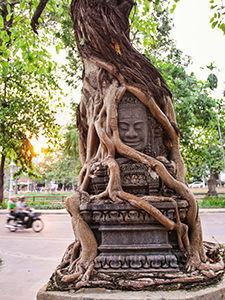
As soon as one arrives, it’s clear that this place pays equal respect to the tradition and the contemporary. Just in front of the hotel, a tree wraps its roots around the old Khmer sculpture, in the same way that jungle swallowed the Angkor Empire temples, Siem Reap’s prime tourism asset. Behind the entrance doors, a gigantic sculpture by Sopheap Pich, one of Cambodia’s most prominent artists, marks the hotel foyer.
Generously sprinkled with greenery and art, in both rooms and common spaces, Treeline resembles a contemporary art museum curated by nature. Overhanging plants giving an artistic frame and artworks using natural materials and Cambodian heritage as inspiration are parts of the same celebratory story. Treeline’s owner and architect, 36-year-old Hok Kang, was inspired by the interplay between nature and civilization, and it speaks at every corner of this luxury resort.
Treeline is fostering the local art scene, but is equally involved in tree-planting and cleaning up Siem Reap, showing that the responsibility of a modern hotel exceeds the boundaries of a building. The town might be blessed by being a launching pad for Angkor Wat, one of the world’s most famous touristic sites, but if the destination management ignores the plastic pollution, the negative branding will radically damage everyone’s results.
Quest for plastic alternatives
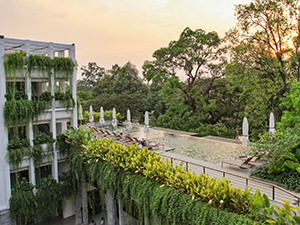
“Individually, we are one drop. Together, we are an ocean.” The quote from Treeline’s hotel directory might sound cheesy. But two years after Jaya’s revolutionary practices hit Siem Reap, the high tide of industry players who invested in conscious travel and created stunning results proved that ecological strategy was based in reason, not in romantic dreams.
From the outside, it could have been just a trendy hotel with a fantastic rooftop infinity pool, two restaurants, and Brown Café, Cambodia’s version of the Starbucks. Inside, there was much more than just serving guests’ hedonism needs.
Treeline’s rooms came with a complimentary mini bar, including the free filtered drinking water in sanitized glass bottles. The free welcome package included dry fruit snacks in glass jars and even M&Ms!
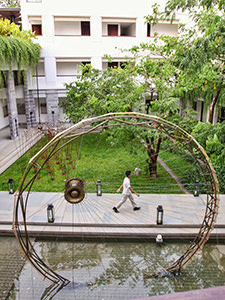
The hotel paid great attention to sourcing products from sustainable and ethical local suppliers. Eggs at breakfast came from the happy chickens. Custom cushions came from the zero waste fashion brand Tonlé. Essential oils at Suri Spa, where I received a great massage, were extracted and blended from locally grown organic botanicals. The solar heating system supplied hot water.
“I need to believe in what I’m doing! It needs to align with my personal values!”, Joni Aker, Treeline’s general manager, told me when I asked about the hotel owners’ support. “If I was not going to be supported in being eco-friendly, eliminating plastics, taking care of the environment, using natural products, and supporting the local community, I knew I couldn’t be part of a project that did not share these values. Within minutes of meeting the hotel owners, I knew our values aligned and was blown away by their vision and principles.”
If you want to book a room in this hotel, check Treeline’s best available prices on this link!
Strategy for the ecological second thought
With yoga mat in my room, some of the best blackout curtains I’ve ever had pleasure sleeping behind, and the friendliness of the staff who remembered my name, the tea and the juice I liked, it was easy to be seduced. Treeline seemed to cater for all guests’ needs, but with a strategy.
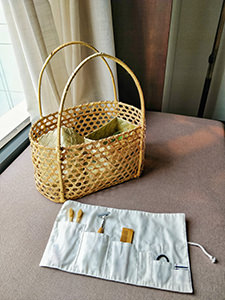
In bathrooms, only the essential amenities were offered (including cotton swabs, made of paper of course). In case that a guest requested additional amenities, he or she would be offered an eco-friendly pack with toothbrush, comb and razor – all made of wood! While it looked like a collectible, it was just following the principle that the number of items used would be smaller if the guests needed to request them at the reception. Supposedly, only 30 percent of Treeline guests request such a pack, so instead of investing into plastic amenities for everyone, serving eco-friendly version to those who really need it was not just an ecological, but also – an economical choice.
On a larger scale, even some cities started to realize how much waste hotels produced. Shanghai authorities have introduced the policy that should be fining the hotels for offering disposable items to guests when they did not request them! The environmental campaign envisaged fines of 5.000 Yuan (640 Euros), hoping that this measure would support the reduction of garbage produced in the city.
Rehash Trash – recycling rubbish, renewing livesRehash Trash is a non-profit social enterprise in Siem Reap, Cambodia. Since 2015, it takes dirty roadside rubbish and transforms it into products with style. The enterprise functions under the label of Green Gecko, the project that supports 32 families who stepped out of the life in poverty and street begging into an empowering environment which provided them jobs, homes, and future. At the same time, Rehash Trash tackled the burning plastic pollution crisis in Siem Reap: cleaning up the environment and giving new life to single-use plastic. The center of plastic pollution
It could be easy to miss their premises at Sombai Road. With hundreds of plastic bags laying around, it didn’t look much different than some other roadside houses in Siem Reap. But these plastic bags were clean! They were washed by hand and hanged up for drying under the sun. “The main point for collecting rubbish is at the Old Market area, where many of these women were previously begging”, Kate Allen, the manager of Rehash Trash, explained. “They can find 1.000 plastic bags per day!” In the center of plastic pollution, the resources are sadly not missing. Seventeen ladies, working for the monthly wage of 200 US dollars, found their income in what most of us discard like a waste. Chayleang is one of them. For the last four years, she knits plastic baskets, floor mats, bags, and other colorful products. She was working in the factory before, then she lost money, and now she’s here, as my instructor. Recycling workshop
Five of them in bright blue shirts, sit on the floor, and silently turn trash into treasure. It is not an easy job, but it’s not degrading or dangerous. These disadvantaged Khmer women are on a mission to clean Siem Reap of trash and poverty! Cutting plastic bags into stripes, then using a special tool to weave them together and, with the help of fingers and some toes, a new product appears! In two hours of my workshop, with Chayleang’s help, I managed to create two bracelets, one keychain, and one glass cup holder. The ladies seemed impressed by my newly learned skills, but I knew that my two hours could never compare with their full-time dedication to upgrading their family and city life. If you want to experience Rehash Trash in Siem Reap first hand, I warmly recommend joining the workshop that will teach you how to create a personalized bracelet from roadside plastic waste. And you will have a great time with these motivating and hard working women!
Wake-up calls for no more plastic
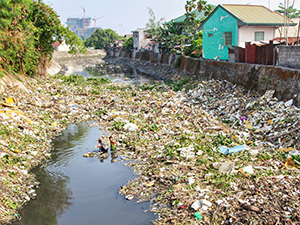
The governments around the world are waking up! The alarm clock is louder than ever, and the snooze button will not erase the problem! Plastic pollution solutions are needed – now!
After they choked the drainage system during the devastating floods, Bangladesh was the first country that banned the use of lightweight plastic bags in 2002.
Today, 65 countries have such a ban, and 31 impose charging for bags that were previously distributed for free.
In May 2019, the Italian island of Capri started fining people 500 Euros if found using cutlery, plates, cups or any other plastic item that was not recyclable or biodegradable. The whole European Union is expected to ban single-use plastics in 2021.
Thailand pledged to get rid of the lightweight plastic bags, plastic cups, straws and styrofoam food containers by 2022. By then, even the Maya Bay (famous as Leonardo DiCaprio’s “Beach”) could receive the first visitors after it was closed in 2018 due to the effects of the overtourism.
In June 2019, Bali became the first part of Indonesia that introduced the island-wide ban of plastic bags, straws, and styrofoam.
Stop dreaming, make a change!
Brothers Gary and Sam Bencheghib first experienced plastic pollution in Bali seas as surfers in 2009: plastic encircled their surfboards! They also did micro plastic samplings at 30 different sites around the island, only to find out that each of them had alarming levels of microplastic particles.
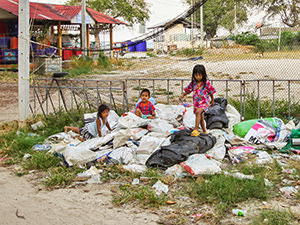
The brothers launched Make a Change Bali, organized clean-ups, and used the power of social media to raise public pollution awareness. In 2017, they made kayaks out of plastic bottles and paddled through the most polluted river in the world – Citarum in West Java.
With growing internet publicity around it, the government was forced to deal with plastic pollution in Indonesia. The military started cleaning up the plastic river. The president Joko Widodo even said that he wanted to see the toxic Citarum become drinkable by 2025! It’s an ambitious goal for a country struggling with not one plastic pollution corner. If the perspectives are romantic walks by waterless canals of trash like in Harar, Ethiopia, I hope Mr. Widodo doesn’t end up being just a dreamer.
Until Bencheghib brothers release their “Plastic River” documentary, check this short plastic pollution video on Youtube which memorizes the brothers’ kayaking adventure!
Did you like this article?
Pin it for later!
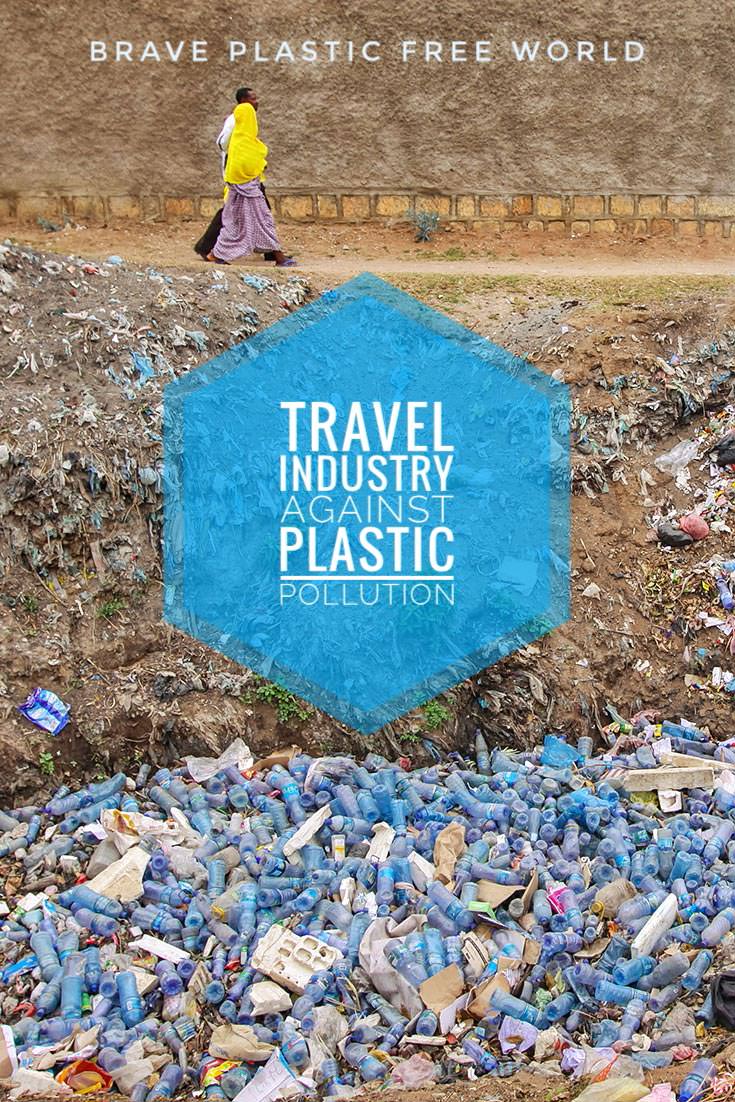
Disclosure: My stays at Jaya House and Treeline, as well as my participation in Rehash Trash workshop, were complimentary, but all opinions are my own. Also, this post contains affiliate links, which means if you click on them and make a purchase, Pipeaway might make a small commission, at no additional cost to you. Thank you for supporting our work!

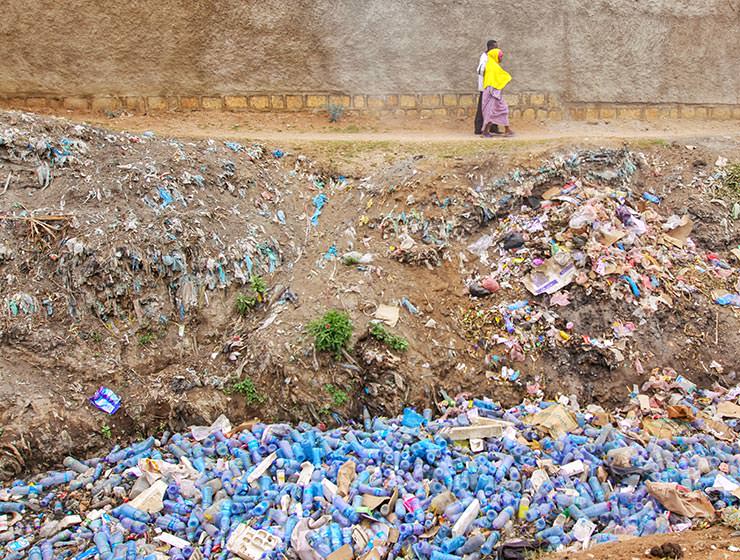
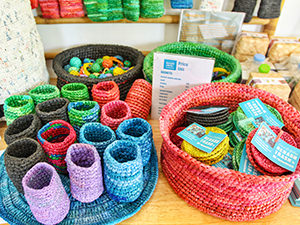 Rehash Trash is a non-profit social enterprise in Siem Reap, Cambodia. Since 2015, it takes dirty roadside rubbish and transforms it into products with style.
The enterprise functions under the label of
Rehash Trash is a non-profit social enterprise in Siem Reap, Cambodia. Since 2015, it takes dirty roadside rubbish and transforms it into products with style.
The enterprise functions under the label of 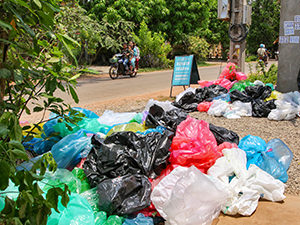 It could be easy to miss their premises at Sombai Road. With hundreds of plastic bags laying around, it didn’t look much different than some other roadside houses in Siem Reap. But these plastic bags were clean! They were washed by hand and hanged up for drying under the sun.
“The main point for collecting rubbish is at the Old Market area, where many of these women were previously begging”, Kate Allen, the manager of
It could be easy to miss their premises at Sombai Road. With hundreds of plastic bags laying around, it didn’t look much different than some other roadside houses in Siem Reap. But these plastic bags were clean! They were washed by hand and hanged up for drying under the sun.
“The main point for collecting rubbish is at the Old Market area, where many of these women were previously begging”, Kate Allen, the manager of 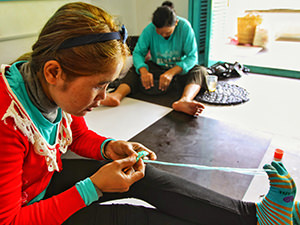 Five of them in bright blue shirts, sit on the floor, and silently turn trash into treasure. It is not an easy job, but it’s not degrading or dangerous. These disadvantaged Khmer women are on a mission to clean Siem Reap of trash and poverty!
Cutting plastic bags into stripes, then using a special tool to weave them together and, with the help of fingers and some toes, a new product appears!
In two hours of my workshop, with Chayleang’s help, I managed to create two bracelets, one keychain, and one glass cup holder. The ladies seemed impressed by my newly learned skills, but I knew that my two hours could never compare with their full-time dedication to upgrading their family and city life.
If you want to experience Rehash Trash in Siem Reap first hand, I warmly recommend
Five of them in bright blue shirts, sit on the floor, and silently turn trash into treasure. It is not an easy job, but it’s not degrading or dangerous. These disadvantaged Khmer women are on a mission to clean Siem Reap of trash and poverty!
Cutting plastic bags into stripes, then using a special tool to weave them together and, with the help of fingers and some toes, a new product appears!
In two hours of my workshop, with Chayleang’s help, I managed to create two bracelets, one keychain, and one glass cup holder. The ladies seemed impressed by my newly learned skills, but I knew that my two hours could never compare with their full-time dedication to upgrading their family and city life.
If you want to experience Rehash Trash in Siem Reap first hand, I warmly recommend 
Great to have an article about plastic and travel – also powerful photos. I’ve been to some of these places myself and it’s always important to address overtourism
Hear, hear! There is no greater enemy of tourism than – overtourism!